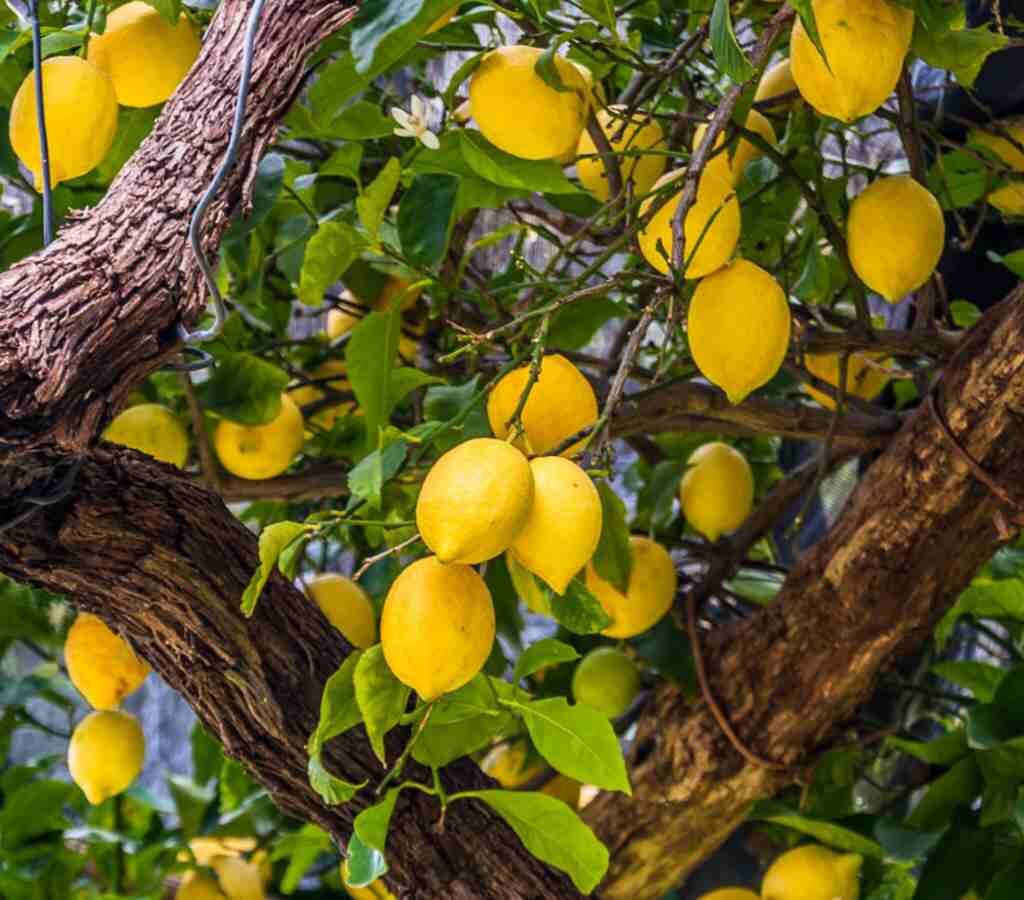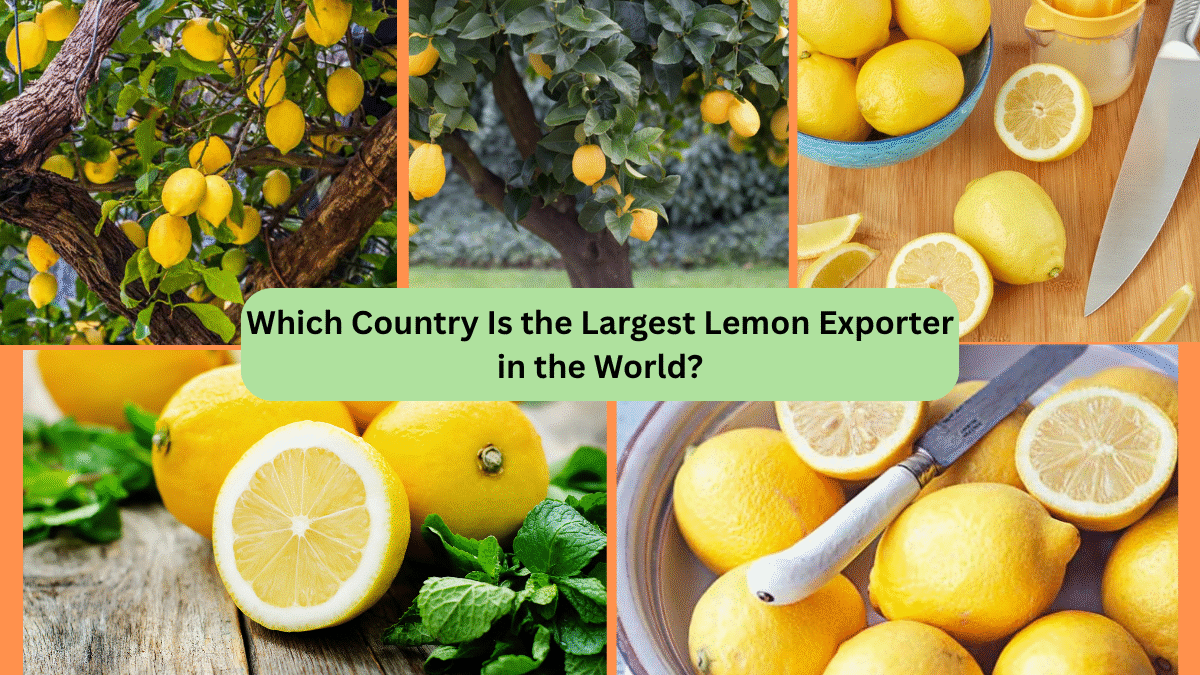Lemons, with their tart, refreshing flavor and high nutritional value, are one of the most widely consumed citrus fruits globally. From culinary uses to medicinal applications and household cleaning, lemons are an indispensable fruit in kitchens and markets worldwide. As global demand for fresh citrus rises, lemon production and trade have become significant contributors to agricultural economies in various countries.
But have you ever wondered which nation leads the global lemon export market? In this article, we’ll reveal which country is the largest lemon exporter in the world, explore the reasons behind its dominance, look at other major players in the lemon trade, and discuss the trends shaping the future of this industry.
Global Lemon Production at a Glance

Lemons belong to the broader citrus family and are cultivated in tropical and subtropical regions. According to the Food and Agriculture Organization (FAO), global lemon and lime production surpassed 22 million metric tons in 2023. Major lemon-producing countries include:
- India
- Mexico
- Argentina
- Spain
- Türkiye
- United States
- South Africa
However, while many countries grow lemons, only a few lead in global exports due to factors like large-scale production capacity, ideal climate conditions, efficient logistics, and access to lucrative international markets.
Which Country Is the Largest Lemon Exporter in the World?
Based on the latest trade data from the International Trade Centre (ITC) and UN Comtrade, Spain holds the title of the world’s largest lemon exporter.
Key Export Statistics:
- In 2023, Spain exported approximately 720,000 metric tons of lemons.
- The total value of these exports exceeded USD 860 million.
- Spain accounts for nearly 22-23% of global lemon export trade by value.
Spain’s consistent leadership in lemon exports is a result of its favorable Mediterranean climate, established citrus-growing regions, and strong trade relationships with neighboring European countries and other international markets.
Why Is Spain the Top Lemon Exporter?

Several factors contribute to Spain’s dominance in the lemon export market:
Ideal Growing Conditions
Spain’s Mediterranean climate, especially in regions like Murcia, Alicante, and Valencia, offers the perfect conditions for lemon cultivation: mild winters, hot summers, and abundant sunshine. These factors help produce high-quality lemons with excellent taste and shelf life.
Advanced Agricultural Practices
Spain’s citrus industry benefits from modern farming techniques, irrigation systems, and pest management practices, ensuring consistent yield and quality.
Strong Infrastructure and Export Logistics
Spain has an efficient cold chain logistics network, port infrastructure, and proximity to major European markets. This allows for quick and cost-effective transportation of fresh lemons to international buyers.
Solid Trade Agreements within the EU
Being a part of the European Union allows Spain to trade seamlessly with other member states, which constitute a significant portion of its lemon exports.
Other Leading Lemon-Exporting Countries
While Spain leads the pack, several other countries are also major contributors to the global lemon trade:
| Rank | Country | Export Volume (2023) | Export Value (USD) |
|---|---|---|---|
| 1 | Spain | 720,000 metric tons | $860 million |
| 2 | Mexico | 745,000 metric tons | $725 million |
| 3 | South Africa | 370,000 metric tons | $365 million |
| 4 | Türkiye | 350,000 metric tons | $360 million |
| 5 | Argentina | 320,000 metric tons | $310 million |
Mexico: A Close Second

Mexico is another major lemon exporter, primarily focused on the North American market. In 2023, Mexico exported approximately 745,000 metric tons of lemons, with over 95% of its exports going to the United States. Thanks to proximity, competitive pricing, and high-quality produce, Mexico holds the second-largest share of the global lemon export market by volume and value.
South Africa and Türkiye: Key Mid-Year Suppliers
Both South Africa and Türkiye play crucial roles in supplying lemons when other producers, particularly those in the Northern Hemisphere, are off-season.
- South Africa: With its Southern Hemisphere harvest, it exports significant volumes to Europe, Asia, and the Middle East during the Northern Hemisphere’s off-season.
- Türkiye: Known for both fresh lemon and lemon oil exports, Türkiye benefits from strategic positioning between Europe, the Middle East, and Central Asia.
How Are Lemons Exported Globally?

Lemons are exported in various forms:
- Fresh Lemons: The most common, transported in refrigerated containers to maintain freshness.
- Processed Lemons: Including lemon juice, essential oils, and candied peels.
- Frozen Lemon Products: Used in the foodservice and industrial sectors.
Major export destinations include the United States, Germany, France, Netherlands, United Kingdom, Russia, and the United Arab Emirates.
Global Trends Driving Lemon Exports
Several key trends are currently shaping the global lemon trade:
Health and Wellness Movement
As consumers worldwide become more health-conscious, demand for vitamin C-rich foods like lemons has surged. Lemons are prized for their immunity-boosting, detoxifying, and digestive benefits.
Rising Demand in Emerging Markets
Countries in Asia, the Middle East, and Africa are increasing their lemon imports as disposable incomes grow and dietary habits become more international.
Culinary and Beverage Industry Growth
The popularity of lemon-based drinks, dressings, and desserts has fueled demand from the hospitality, restaurant, and food processing sectors globally.
Preference for Organic and Sustainably Grown Produce
Demand for organic and fair-trade certified lemons is growing, especially in high-income markets in Europe and North America.
Challenges in the Lemon Export Market

Despite its growth, the global lemon trade faces certain challenges:
- Climate Change: Droughts, storms, and temperature fluctuations affect harvest yields in major producing countries like Spain and Argentina.
- Rising Production and Shipping Costs: Fertilizer prices, labor shortages, and increased freight charges have impacted profit margins.
- Phytosanitary Regulations: Exporters must comply with strict international standards for pesticide residue and disease control, particularly in markets like the EU and US.
- Oversupply Issues: In some regions, overproduction has led to market saturation, price drops, and wastage.
Future Outlook for Global Lemon Exports
Looking ahead, the global lemon market is expected to continue growing, driven by several factors:
- Spain is likely to maintain its position as the world’s largest lemon exporter, thanks to its established infrastructure, high-quality produce, and favorable climate.
- Mexico and South Africa are poised for further growth, with increased investments in agricultural technology and access to new markets.
- Emerging players like Egypt, Chile, and China are expanding their lemon production and export capabilities.
- Premium, organic, and sustainably farmed lemons will command higher prices and increasing demand, particularly in developed economies.
Conclusion
To summarize:
- Spain is the world’s largest lemon exporter, shipping over 720,000 metric tons annually and accounting for around 22-23% of global lemon exports by value.
- Spain’s success is due to its ideal Mediterranean climate, modern farming practices, excellent logistics, and strong trade relationships within Europe and beyond.
- Mexico, South Africa, Türkiye, and Argentina are also major players in the international lemon trade.
- Rising health awareness, demand from emerging markets, and growth in the food and beverage industry are driving global lemon consumption.
- While challenges like climate change and rising costs persist, the outlook for global lemon exports remains bright, with expanding opportunities in both traditional and emerging markets.






Leave A Comment